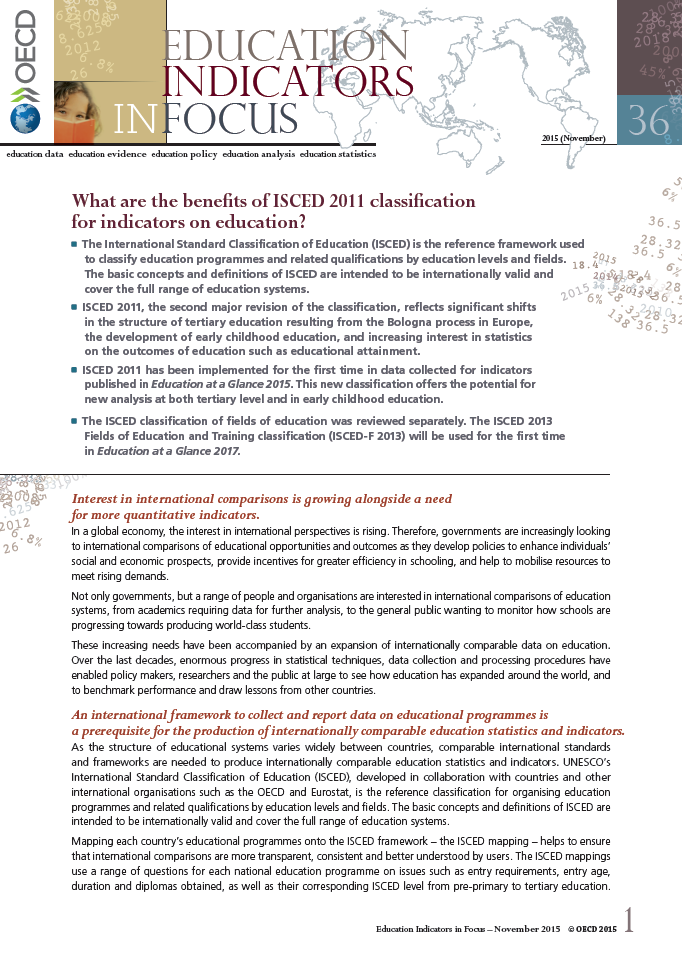What are the benefits of ISCED 2011 classification for indicators on education?

Date
2015-11Author
OECD. Organisation for Economic Cooperation and Development
Metadata
Show full item recordAbstract
The International Standard Classification of Education (ISCED) is the reference framework used to classify education programmes and related qualifications by education levels and fields. The basic concepts and definitions of ISCED are intended to be internationally valid and cover the full range of education systems. ISCED 2011, the second major revision of the classification, reflects significant shifts in the structure of tertiary education resulting from the Bologna process in Europe, the development of early childhood education, and increasing interest in statistics on the outcomes of education such as educational attainment. ISCED 2011 has been implemented for the first time in data collected for indicators published in Education at a Glance 2015. This new classification offers the potential for new analysis at both tertiary level and in early childhood education. The ISCED classification of fields of education was reviewed separately. The ISCED 2013 Fields of Education and Training classification (ISCED-F 2013) will be used for the first time in Education at a Glance 2017.
Also available in: French
